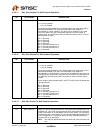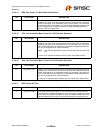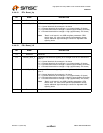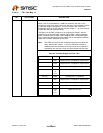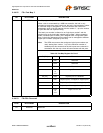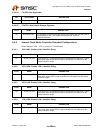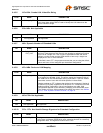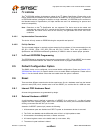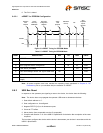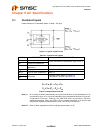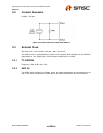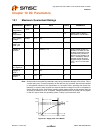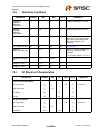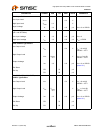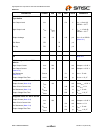
High Speed Inter-Chip USB 2.0 Hub and Flash Media Controller
Datasheet
Revision 1.0 (06-01-09) 52 SMSC USB4640/USB4640i
DATASHEET
8.4.6 I
2
C EEPROM
The I
2
C EEPROM interface implements a subset of the I
2
C Master Specification (Please refer to the
Philips Semiconductor Standard I
2
C-Bus Specification for details on I
2
C bus protocols). The device’s
I
2
C EEPROM interface is designed to attach to a single “dedicated” I
2
C EEPROM, and it conforms to
the Standard-mode I
2
C Specification (100 kbps transfer rate and 7-bit addressing) for protocol and
electrical compatibility.
Note: Extensions to the I
2
C Specification are not supported. The device acts as the master and
generates the serial clock SCL, controls the bus access (determines which device acts as the
transmitter and which device acts as the receiver), and generates the START and STOP
conditions.
8.4.6.1 Implementation Characteristics
The device will only access an EEPROM using the sequential read protocol.
8.4.6.2 Pull-Up Resistor
The circuit board designer is required to place external pull-up resistors (10 kΩ recommended) on the
SPI_DO / GPIO5 / SDA / SPI_SPD_SEL and SPI_CLK / GPIO4 / SCL lines (per SMBus 1.0
Specification and EEPROM manufacturer guidelines) to VDD33 in order to assure proper operation.
8.4.7 In-Circuit EEPROM Programming
The EEPROM can be programmed via automatic test equipment (ATE). Pulling nRESET low tri-states
the device’s EEPROM interface and allows an external source to program the EEPROM.
8.5 Default Configuration Option
The SMSC device can be configured via its internal default configuration. Please see Section 8.3.2,
"EEPROM Data Descriptor" for specific details on how to enable default configuration. Please refer to
Table 8.1 for the internal default values that are loaded when this option is selected.
8.6 Reset
There are three different resets that the device experiences. One is a hardware reset from the internal
power-on reset (POR) circuit, another reset is via the nRESET pin, and the third is a USB bus reset.
8.6.1 Internal POR Hardware Reset
All reset timing parameters are guaranteed by design.
8.6.2 External Hardware nRESET
A valid hardware reset is defined as assertion of nRESET for a minimum of 1 μs after all power
supplies are within operating range. While reset is asserted, the device (and its associated external
circuitry) consumes less than 500
μA of current.
Assertion of nRESET (external pin) causes the following:
1. All downstream ports are disabled and PRTCTL power to downstream devices is removed.
2. The PHYs are disabled and the differential pairs will be in a high-impedance state.
3. All transactions immediately terminate; no states are saved.
4. All internal registers return to the default state (in most cases, 00h).
5. The external crystal oscillator is halted.



